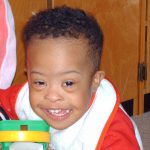Drowning is one of the main causes of death among children between the ages of 12 and 48 months. It only takes seconds for a baby to drown and they can do so in as little as an inch of water. You need to stay very close within arm’s reach of your baby. Always supervise your baby every moment that he/she is near water or in water (including the bathtub). If you must leave, even for a minute, take your baby with you.
Signs of drowning
• Floating face down
• Head tilted back with mouth open
• Trying to swim
• Gasping for air
If you find your baby in water;
1. Take the child out of the water.
2. Shout for help if you are not alone.
3. Check for breathing and any signs of responsiveness. Gently tilt the head back with one hand and lift the chin with the other. Place your ear near the child’s mouth and see if you feel any air on your cheek or if the chest is moving. You can also call the child’s name to see if he/she will respond.
4. For Infants under age 1: Place your mouth over the baby’s nose and lips and give 2 breaths for 1 second each. Look out for the chest to rise and fall.
5. For children 1 year and older: Pinch the baby’s nose and seal your lips over their mouth. Give 2 slow full breaths around 1-2 seconds each. Wait for the chest to rise and fall before giving the second breath.
6. If the chest rises, check for a pulse by putting 2 fingers on your child’s neck or for smaller babies, inside the arm between the elbow and shoulder. If there is no pulse, try again and start on CPR.
7. Keep trying until help arrives
8. If your child starts to breathe, they may vomit and find it difficult to breathe, put them in the recovery position, with the face pointing slightly down, ensuring that nothing is blocking or covering the nose and mouth.
9. Take your baby to the nearest health centre for evaluation.
Delayed drowning
This is a complication arising from a near-drowning experience and can occur 24 hours after the rescue. Here are signs to watch out for:
• Persistent cough
• Difficulty in breathing
• Tiredness and lethargy
• Decreased activity
• Mental confusion
• Bluish colour on lips, nails and skin













